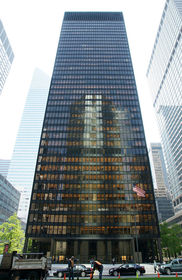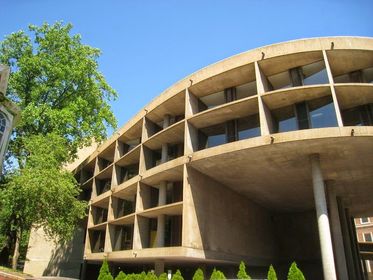History of American Architecture Flashcards on 12- Late Modernism 1950-1980, created by rosvain on 03/12/2014.
Pinned to
225
5
0
No tags specified
|
|
Created by rosvain
about 10 years ago
|
|
Close
|
|
Created by rosvain
about 10 years ago
|
|

The first modern building on the campus, it was also the first endorsement of the modern style by a major university and was seen in the national and architectural presses as a turning point in the acceptance of the aesthetic in the U.S.
a modernist firm headed by Walter Gropius and seven younger architects in 1945 in Cambridge, Massachusetts.


appointed head of the architecture school at Chicago's Illinois Institute of Technology.
One of the benefits of taking this position was that he would be commissioned to design the new buildings and master plan for the campus.

The Seagram Building has become an icon of the growing power of the corporation, that defining institution of the twentieth century. In a bold and innovative move, the architect chose to set the tower back from the property line to create a forecourt plaza and fountain on Park Avenue.

In the 1950s, a unique opportunity to translate the Radiant City on a grand scale presented itself in the construction of the Union Territory Chandigarh, India's first planned city. Le Corbusier designed many administration buildings, including a courthouse, parliament building, and a university. He also designed the general layout of the city, dividing it into sectors. Le Corbusier was brought on to develop the plan of Albert Mayer.
Perhaps the most significant difference between the Contemporary City and the Radiant City is that the latter abandoned the class-based stratification of the former; housing was now assigned according to family size, not economic position










The main terminal was designed in 1958 by famed Finnish-American architect Eero Saarinen and it is highly regarded for its graceful beauty, suggestive of flight.













Ioh Ming Pei
Christian Science Center
Boston, MA
1972









 Hide known cards
Hide known cards